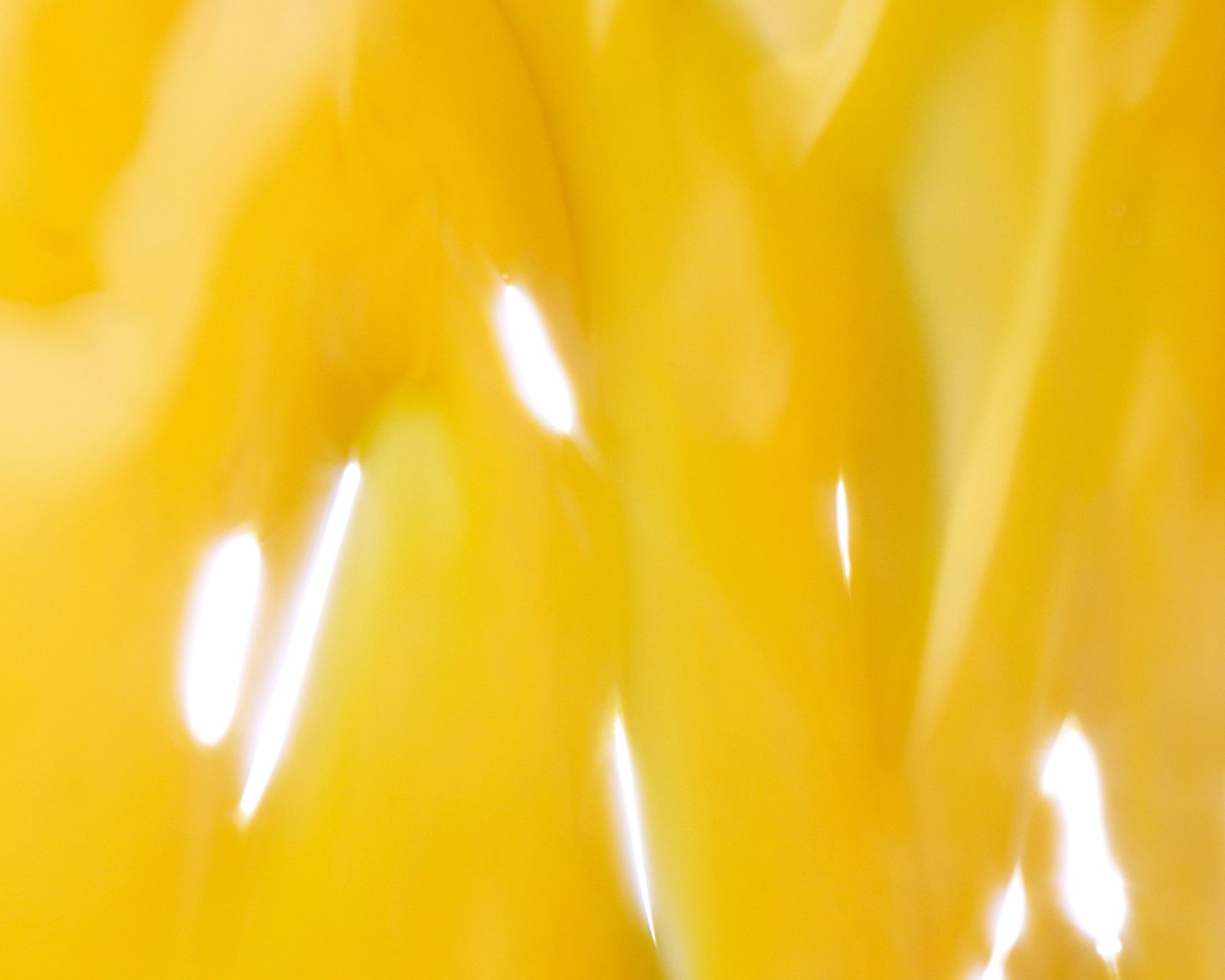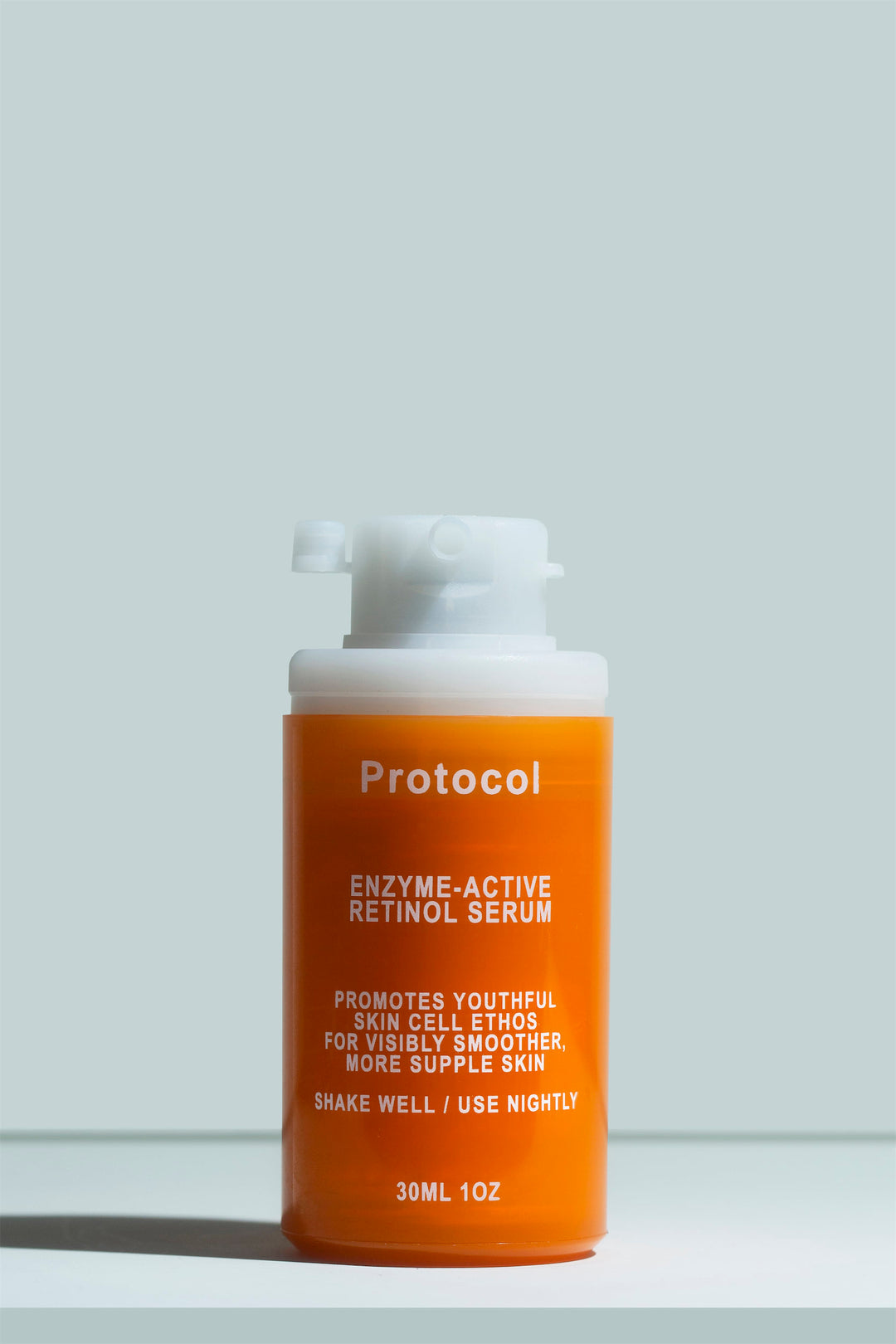Types of Retinoids + The Definitive Retinol Strength Chart


Shopping for effective skincare can be confusing when it seems like there are so many different types of retinol.
Why is it sometimes written out as “retinal” with an a? What on earth is a granactive retinoid? And which type of retinoid is best?
Basically, retinol’s effects are vastly different depending on the type of retinoid that is actually used. It can range from potent and a little harsh to pretty much useless, with everything in between.
In this post, we’ll clarify all of the confusion. We also include a handy retinol strength chart for when all you need is a quick reference.
What are retinoids?
Before we dive in and explain the different types of retinoids, here’s a quick explanation of what retinol is in the first place. Retinol and all of its relatives are just vitamin A and vitamin A derivatives - yes, the same kind of vitamin A you get from carrots and that helps support your vision.
In skin care, retinoids are considered the gold standard for anti-aging. They can transform the skin fundamentally by acting on the skin’s retinoic acid receptors, helping to increase skin cell differentiation to improve dead skin shedding and collagen production.
This effect has a positive impact on all major skin concerns, including fine lines, wrinkles, dark spots, and even breakouts and clogged pores.
Retinoid vs. retinol: what’s the difference?
What’s the difference between a retinoid and retinol? It can be pretty confusing since often the two terms are used interchangeably.
Basically, retinoid is the umbrella term for all ingredients that have an impact on the skin’s retinoic acid receptors.
Retinol is a type of retinoid, but there are many others: Tretinoin, retinal, adapalene, retinyl palmitate, and more. Throughout this post, we’ll discuss the effects of the different types of retinoids in more detail.
The retinol strength chart
This chart shows the strength of each type of retinoid, from very mild (and largely useless) synthetic derivatives like retinyl palmitate to ultra-powerful retinoic acid.

To understand what’s behind these levels of strength and their measured skin impact, it’s important to understand retinol’s mechanism of action. Basically, we have receptors in our skin that are activated by retinoic acid (there are actually 3 of them: alpha, beta, and gamma).
Retinoic acid is the only retinoid that can impact those receptors directly. All other retinoids have to convert into retinoic acid before they can have their own impact.
That conversion process has limited efficiency, so the more conversions a retinoid has to go through, the less impact it’ll have on the skin.
It gets a little more complicated than that, though, so let’s dive even deeper into all of the different retinoids!
Types of retinol explained
One by one, these are the main types of retinoids, and how each one impacts the skin.
The one that’s everywhere: Retinol
- Conversions: 2 • Strength: Mild • Ideal concentration: 0.5% to 1%
Retinol is regular vitamin A. It’s the most common type of retinoid in skincare. It’s so common that the phrase “types of retinol” gets more searches on google than the more accurate “types of retinoids.”
Retinol in skincare definitely works, but it’s not very powerful. Once applied to the skin, it has to undergo two enzymatic conversions: First, enzymes in the skin convert it to retinal, and then they convert into retinoic acid. A lot is lost in the process, so retinol isn’t very strong - retinoic acid is about 20 times stronger. That’s why it’s commonly used in skincare in concentrations between 0.5% and 1%.
Retinol is a good choice for those with sensitive skin looking for some anti-aging benefits. However, there’s a fine line between using a gentle, effective retinol product and using a product that’s largely without effect.
As a molecule, retinol isn’t very stable, so formulators face a challenge when bottling it. Many retinol formulas lose their potency soon after consumers start using them because any exposure to light and air causes retinol to degrade. If you’re not noticing any changes in your skin even after months of using retinol, it’s possible your product has degraded too much.
Our balanced fave: Retinal
- Conversions: 1 • Strength: Balanced • Ideal concentration: 0.1%
Retinal is the next step up from retinol, so don’t miss that “a” in there. Also known as “retinaldehyde,” this is a balanced yet powerful retinoid that hits the sweet spot of being actually, measurably effective but also gentle.
It’s quite literally the next step since once retinol is applied. Our skin’s natural enzymes convert it into retinal, so any non-prescription retinol product you put on your skin will turn into retinal (retinaldehyde) at some point before it can be used. This means that if you apply retinal directly, there’s one less conversion to get to retinoic acid, making retinal a more bioavailable skin-renewing agent. Despite the need for one conversion, retinal still has similar effects to its full-strength cousin. In a direct comparison, it showed equal effects but with significantly less irritation.
Inflammation can often impede skin processes like cell differentiation, so in a way, having the effects of retinal without the inflammation may actually result in more impressive results within a shorter time frame. At least, that is something we’ve noticed with our clients who transitioned to retinal after trying stronger retinoids.
The overpowered one: Retinoic acid
- Conversions: 0 • Strength: High • Ideal concentration: 0.01% to 0.05%
Retinoic acid is the most powerful retinoid because it acts on the skin’s retinoic acid without the need for conversion. It’s available by prescription only, usually as “tretinoin.”
Since it’s a pharmaceutical medication, its effects are well-documented and clear. This is a powerful molecule that is often recommended to help with a whole host of skin concerns.
However, it’s also frequently associated with a period of irritation and skin peeling. If you are dealing with any specific skin conditions, you can speak to your doctor about this prescription option.
Negligible effects: Synthetic retinol derivatives
- Conversions: 3 • Strength: Negligible • Ideal concentration: Doesn’t matter
Skincare companies love synthetic retinol derivatives. They’re cheap, shelf-stable, and easy to formulate. They also allow brands to call their product a “retinol serum” or “vitamin A serum,” even though it won’t have even a fraction of the results of a true retinol or retinal serum.
The most common synthetic derivatives in skincare are retinyl palmitate, retinyl propionate, hydroxypinacolone retinoate (i.e. “granactive retinoid”), and more recently, we’re also seeing retinyl retinoate.
All of these synthetic derivatives have poor bioavailability when compared to retinal or retinol. Our skin’s natural enzymatic process already knows how to convert those natural forms of vitamin A, but the synthetic derivatives present a challenge. The skin can make use of them, but that process isn’t as efficient.
As such, it’s no surprise that there's very little evidence behind them. The evidence that does exist is often “in vitro” meaning that they’ve been tested on cells in Petri dishes, but rarely on human skin. When conducted with real, live human beings, the studies are often carried out by the industry without good control measures. At times, they’re compared to retinol, which is already a weak skincare ingredient.
The most common synthetic retinoid, retinyl palmitate, was actually clinically proven to be largely devoid of retinol’s skin-renewing properties. The study pitted it against a placebo cream, and the results ended up being about the same, likely because of the moisturizing base.
Since most research on synthetic retinoids is sponsored by the industry, our guess is that many more studies were scrapped once it was clear their results were moving in the same direction.
The targeted one: Adapalene
- Conversions: 0 • Strength: Targeted • Ideal concentration: Varies
Adapalene is an interesting retinoid. It doesn’t need to convert into retinoic acid to impact the skin, but it likely only influences two of the three retinoic acid receptors. It acts on receptors beta and gamma, but not on the alpha receptor.
It's approved as an over-the-counter drug for acne, thanks to its ability to clear and prevent clogged pores, but there isn’t as much data on whether it can help with other skin concerns like pigmentation or fine lines. The benefit to this form though is that––unlike cosmetics––adapalene products are regulated and monitored by the FDA, so you at least KNOW you’re getting a real, well-made product that has as much retinol in it as it claims to.
New prescription retinoids: Trifarotene and tazarotene
- Conversions: 0 • Strength: Targeted • Ideal concentration: 0.1%
Nowadays, in addition to adapalene, there are a few other “new generation” retinoids that doctors may prescribe for acne, like trifarotene and tazarotene. These are technically also synthetic retinoids, but their mechanism of action is a little different.
Trifarotene largely only targets the gamma receptors, while tazarotene targets both the gamma and beta receptors. They are usually prescribed in specific situations, like for psoriasis and acne, rather than as “do it alls.” As with retinoic acid, you’ll want to speak to your doctor if you’re interested in using them for a specific concern.
The nuclear option: Isotretinoin
Isotretinoin is not usually a retinoid you’d use topically. It’s a prescription-only retinoid that’s taken orally. It works by shrinking the sebaceous glands, but it’s a serious medication with real side effects.
Many doctors think of it as the “nuclear option” for acne, or a last resort when gentler medications haven’t worked.
The form of retinol isn’t always what it appears!
Brands don’t always like to say what kind of retinol is in their formula. It’s very common for brands to call their products retinol serums even when they’re made with largely-ineffective synthetic derivatives. It’s mostly without repercussions, too, since no governing agency gets involved when brands misrepresent their ingredients.
When shopping, try to find the full ingredient list somewhere on the product page or packaging. If you don’t see the words “retinol” or “retinal” listed, then you know the product doesn’t contain any retinol.
At Protocol Labs, we’re kind of playing the opposite game, but we hope you don’t mind! Everyone knows retinol, but only those of you who are tuned into the skincare world (or who read this article) are familiar with retinal. Our superstar vitamin A serum contains potent retinal rather than weak retinol.
But the full name of the product hopefully clarifies things: Retinal is basically retinol that has already converted through one enzymatic reaction, coming one step closer to retinoic acid. Hence: Enzyme-Active Retinol Serum! If you want to see real results, by the way, consider giving it a try.
Conclusion: Which type of retinoid should you use?
Our skin has an easier time metabolizing certain molecules over others. When it comes to retinoids, our skin already has a built-in process for converting natural forms of vitamin A into something that it can use.
That’s why, if you’re after the broad spectrum of benefits that topical retinoids can offer, it’s important to choose natural types of retinol rather than synthetic derivatives. That means opting for retinol, retinal, or prescription retinoic acid.
You’ve already guessed it - retinal is our definitive favorite, thanks to its balanced effects. It’s more bioavailable than retinol, but it’s gentler than retinoic acid. That means dramatic skin-optimizing results without the hurdle of irritation.





